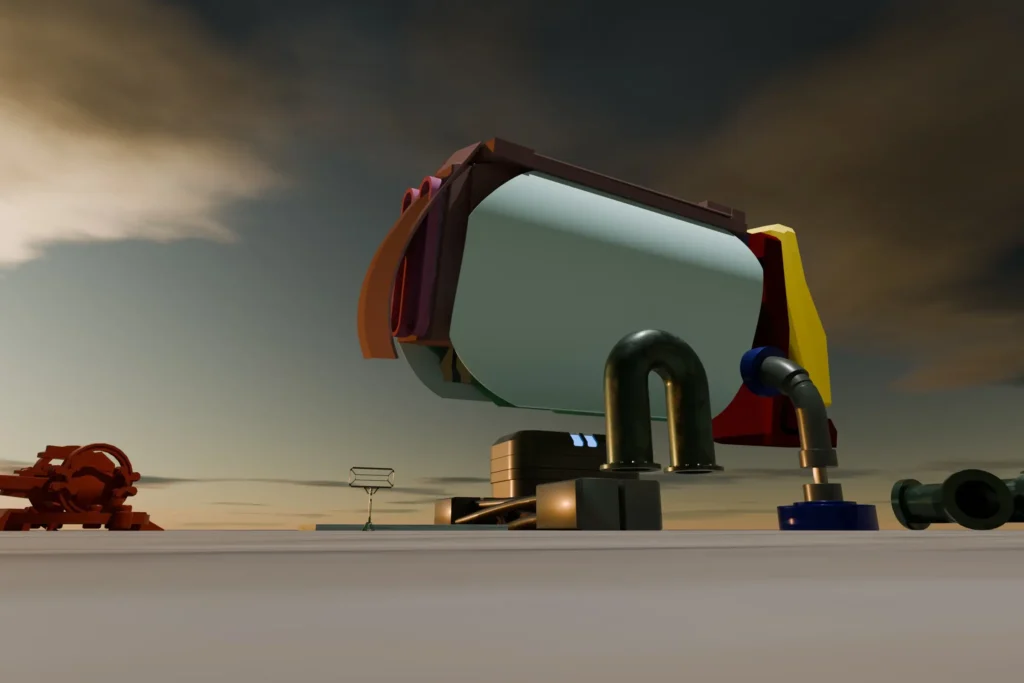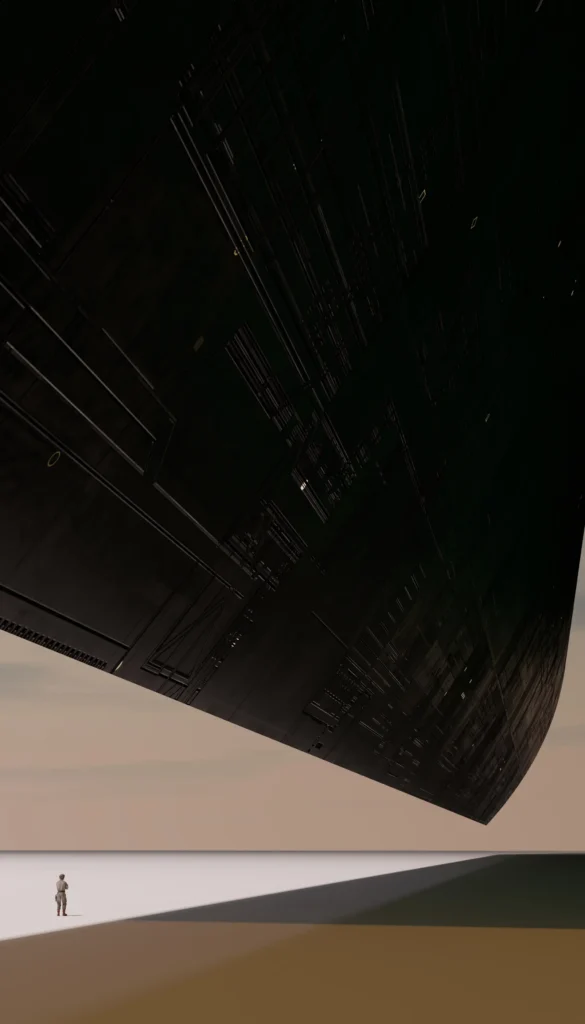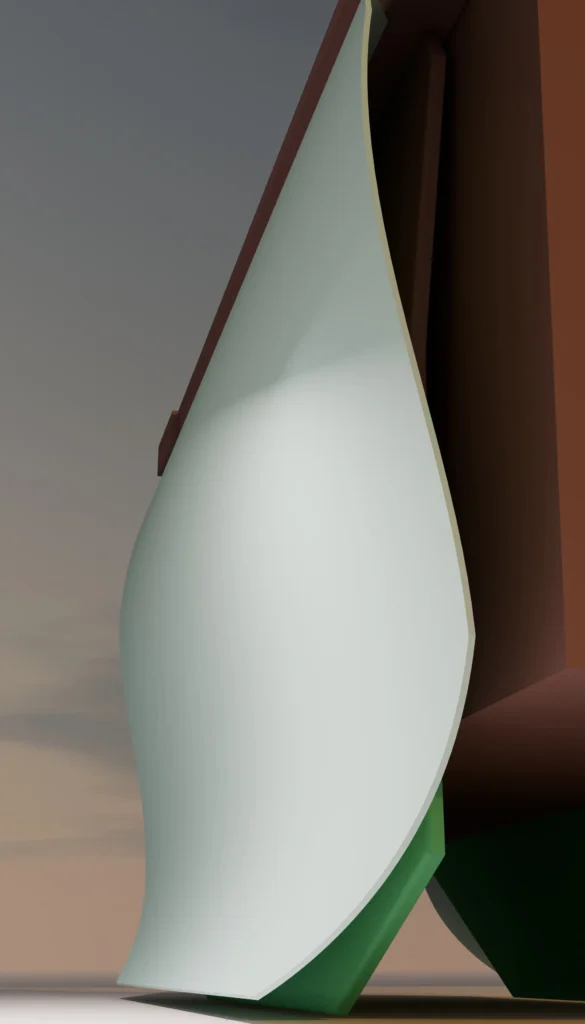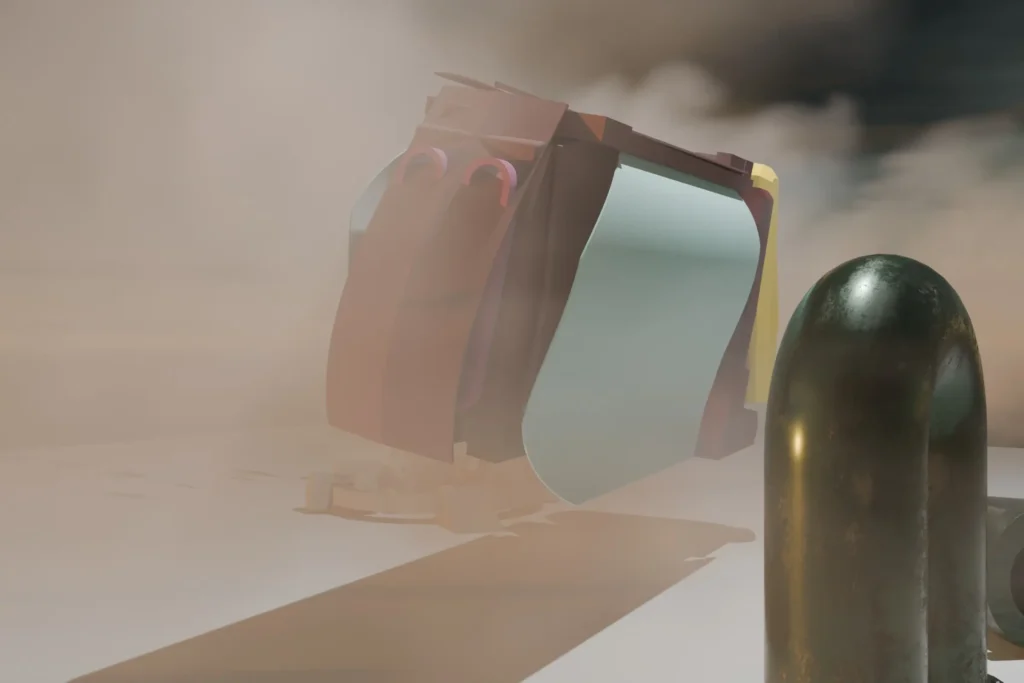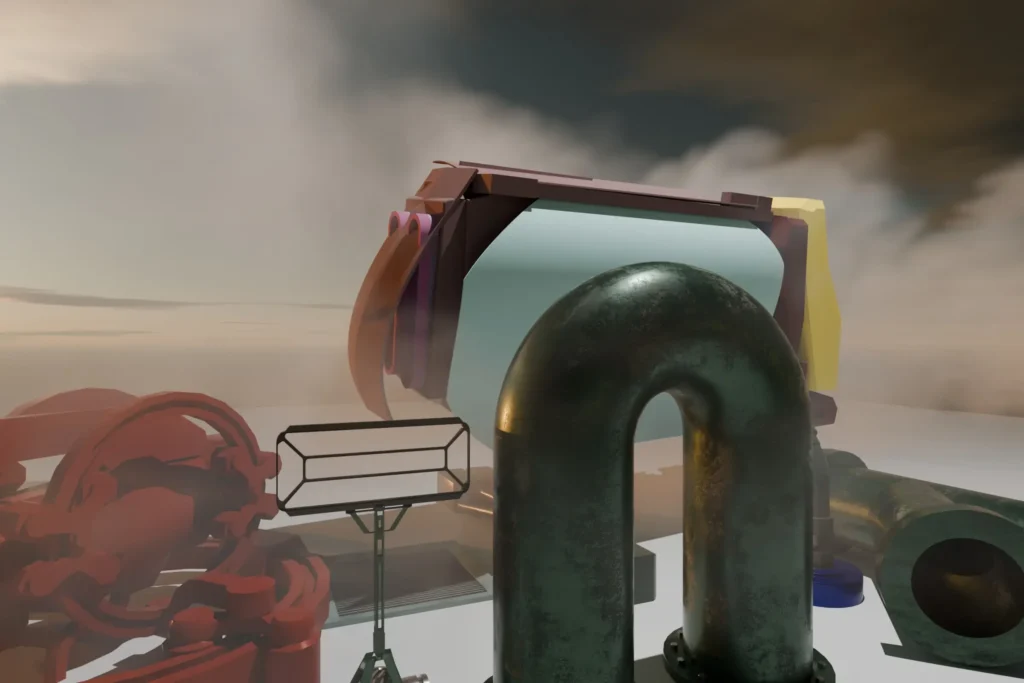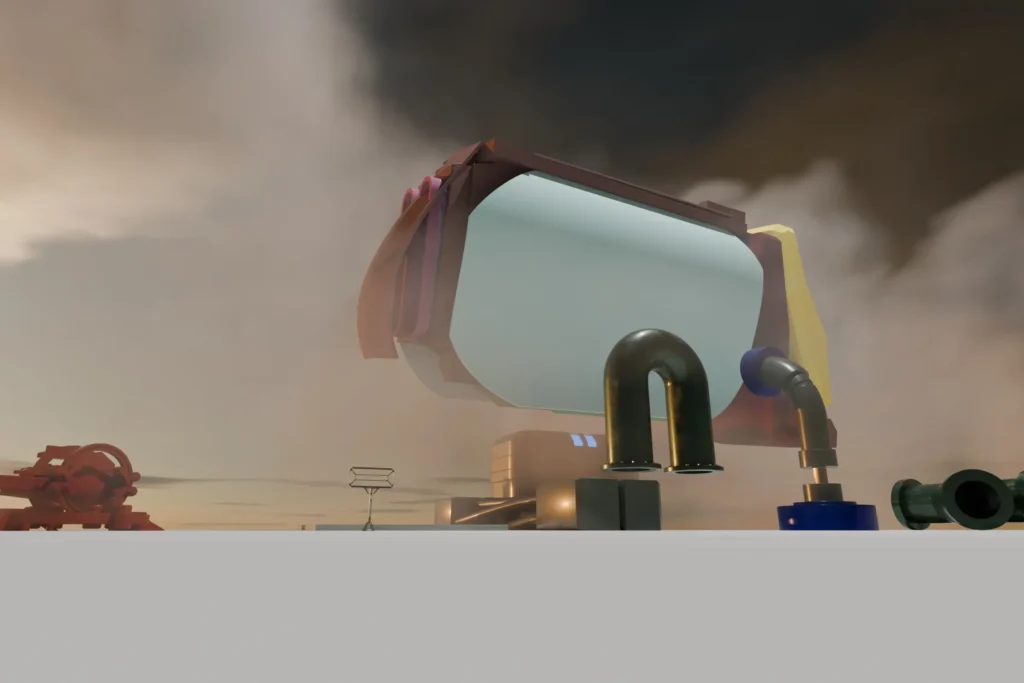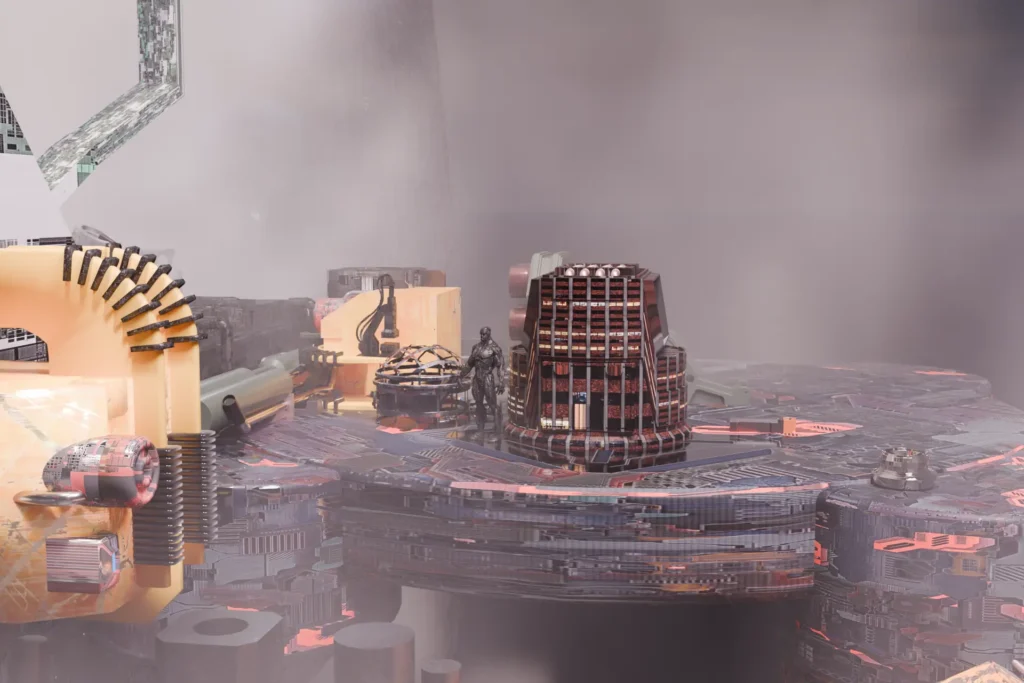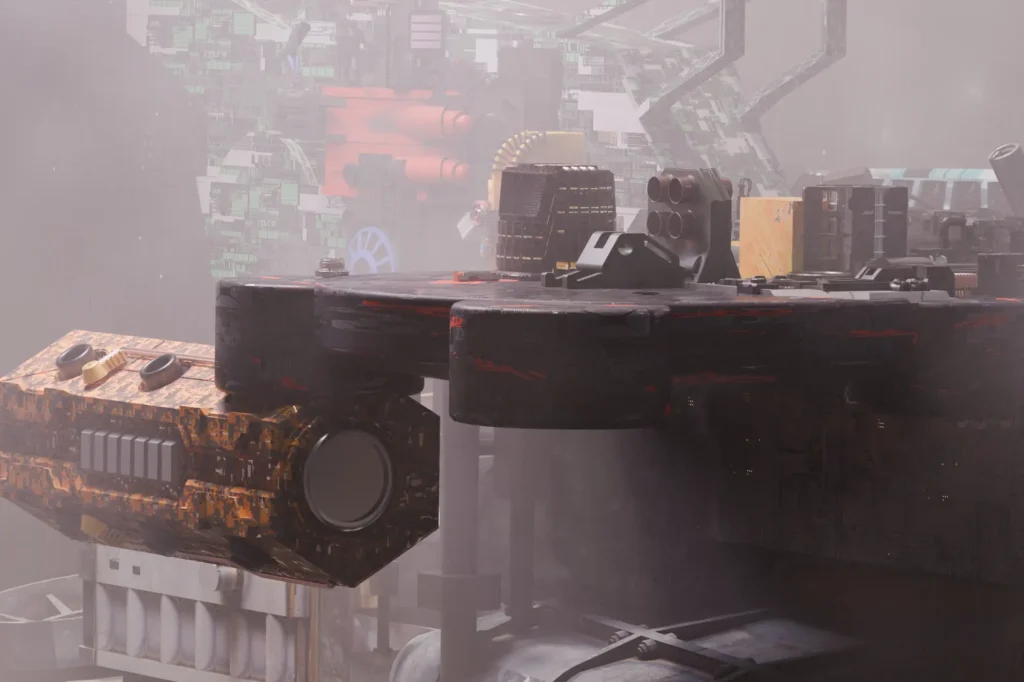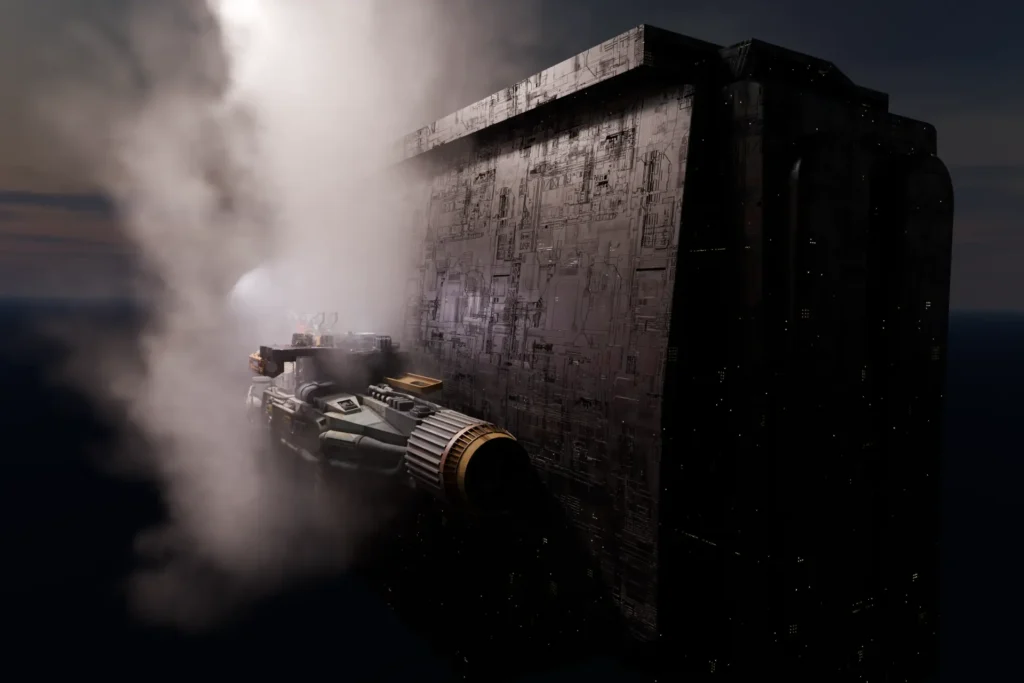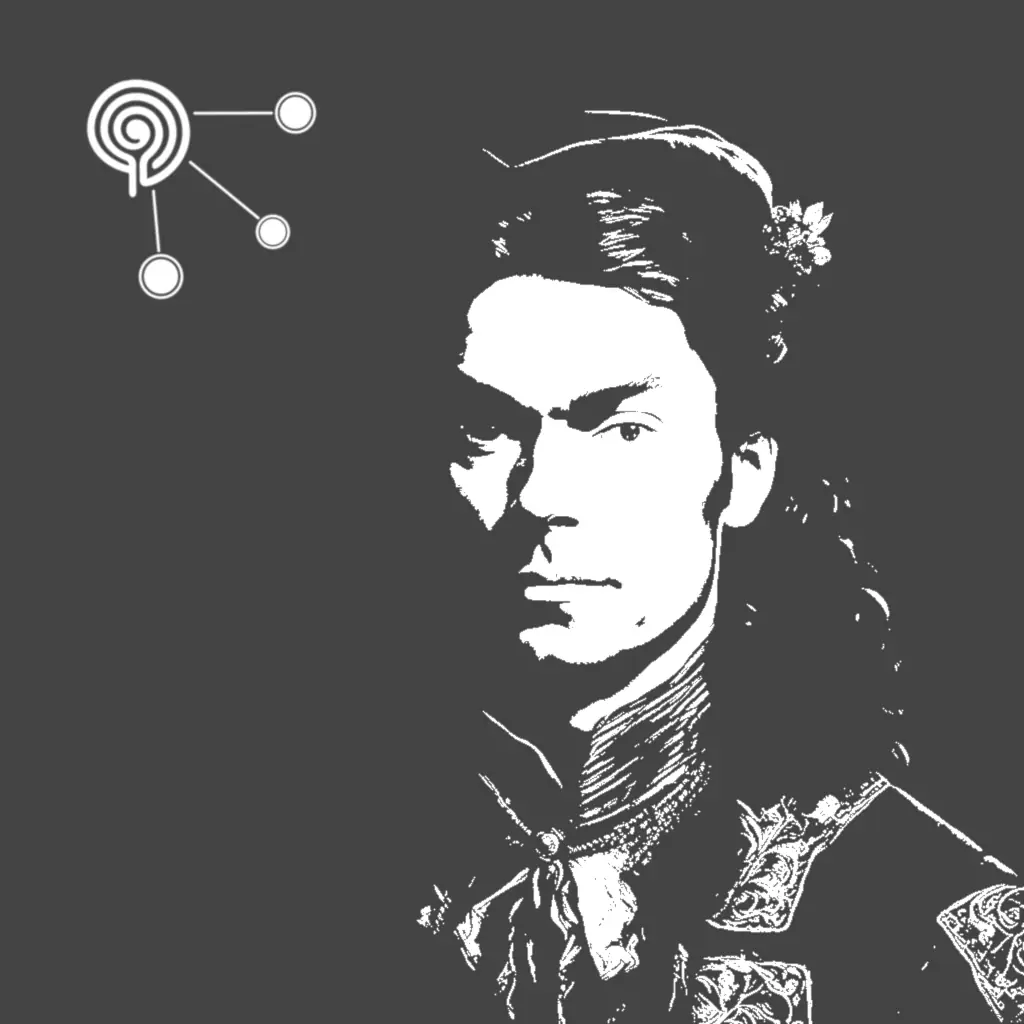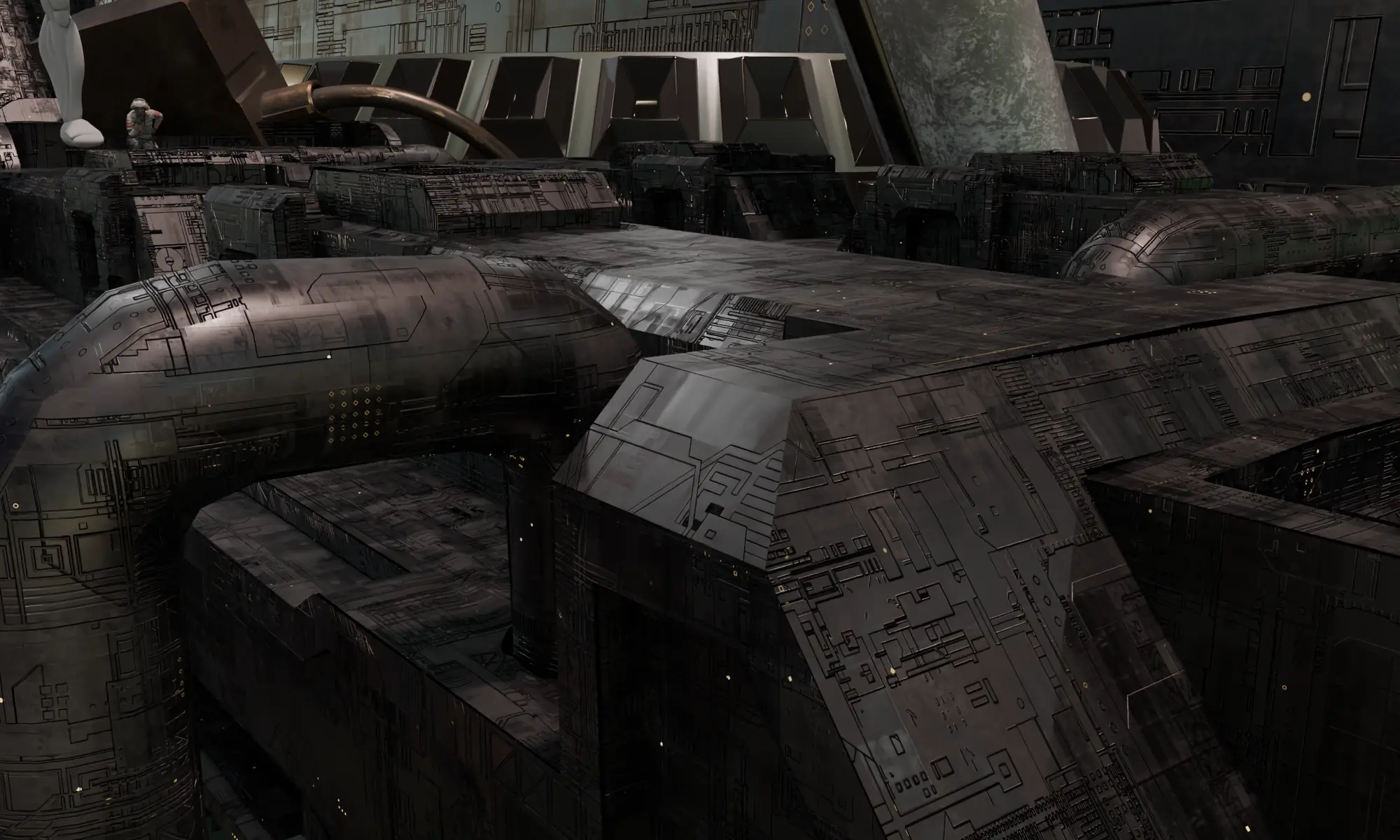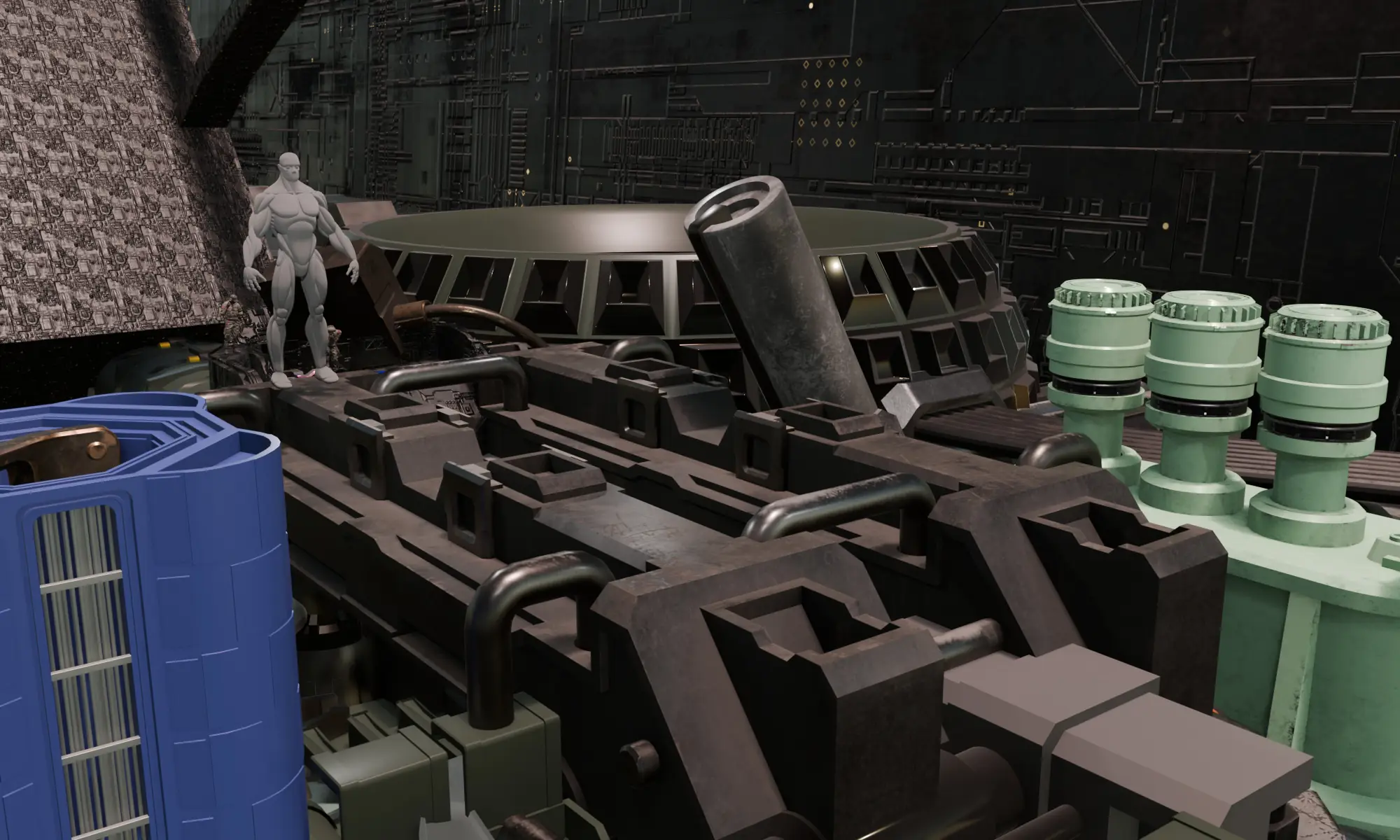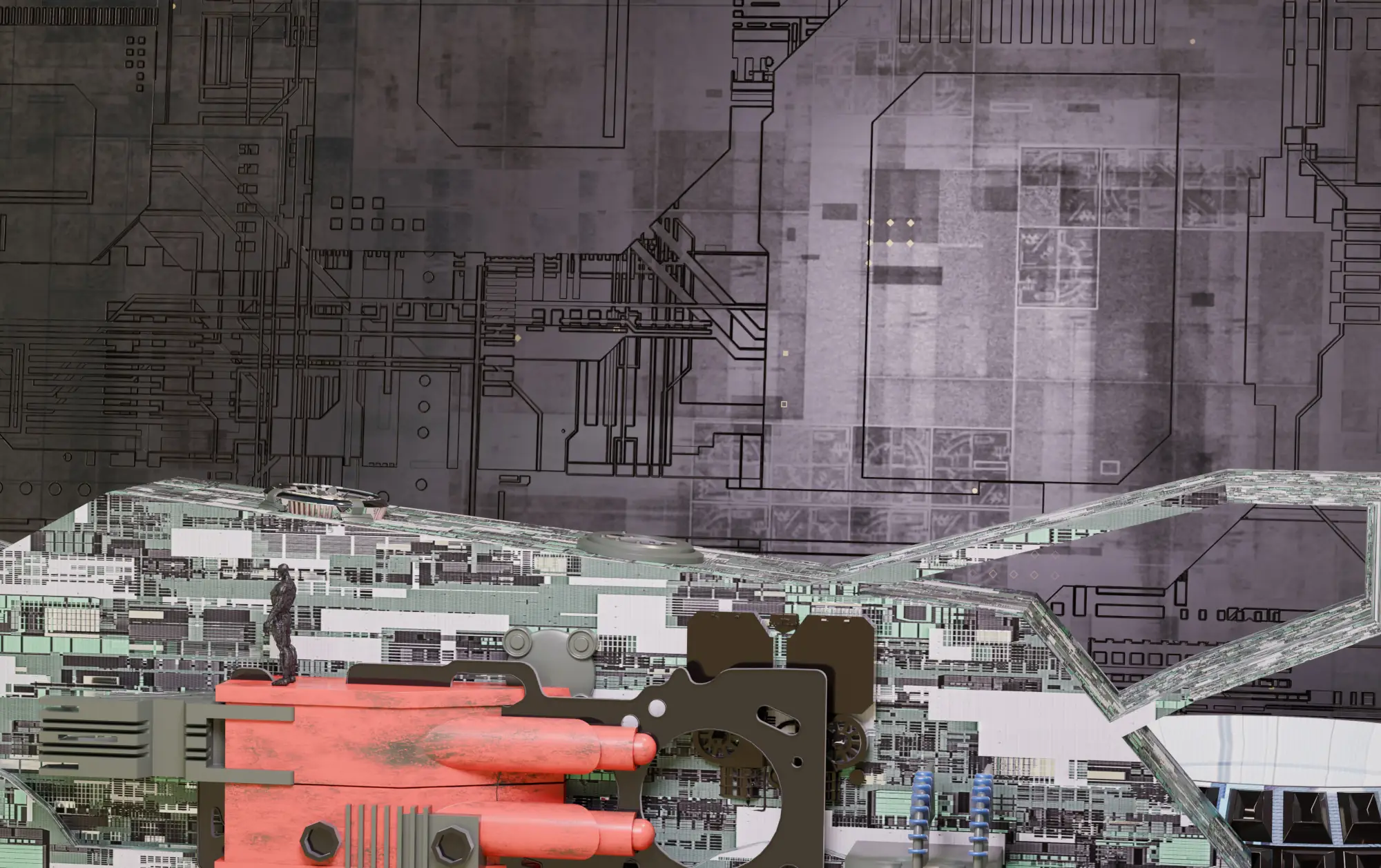Recently I embarked upon some 3D modelling work. I started with a sketch of a very large freighter. As you can see I noted that my idea was for a very large freighter. a spaceship that is 22km long is difficult to model due to the constraints imposed by all 3D modellers.
So often you make a compromise. You model at a 1:10000 scale. Then when you work you have to think about that factor. Not only modelling such an enormous object a problem but rendering it is also a bit of a headache.
Many of these problems are related to a sense of proportionality that is required to master this sculptural artform.
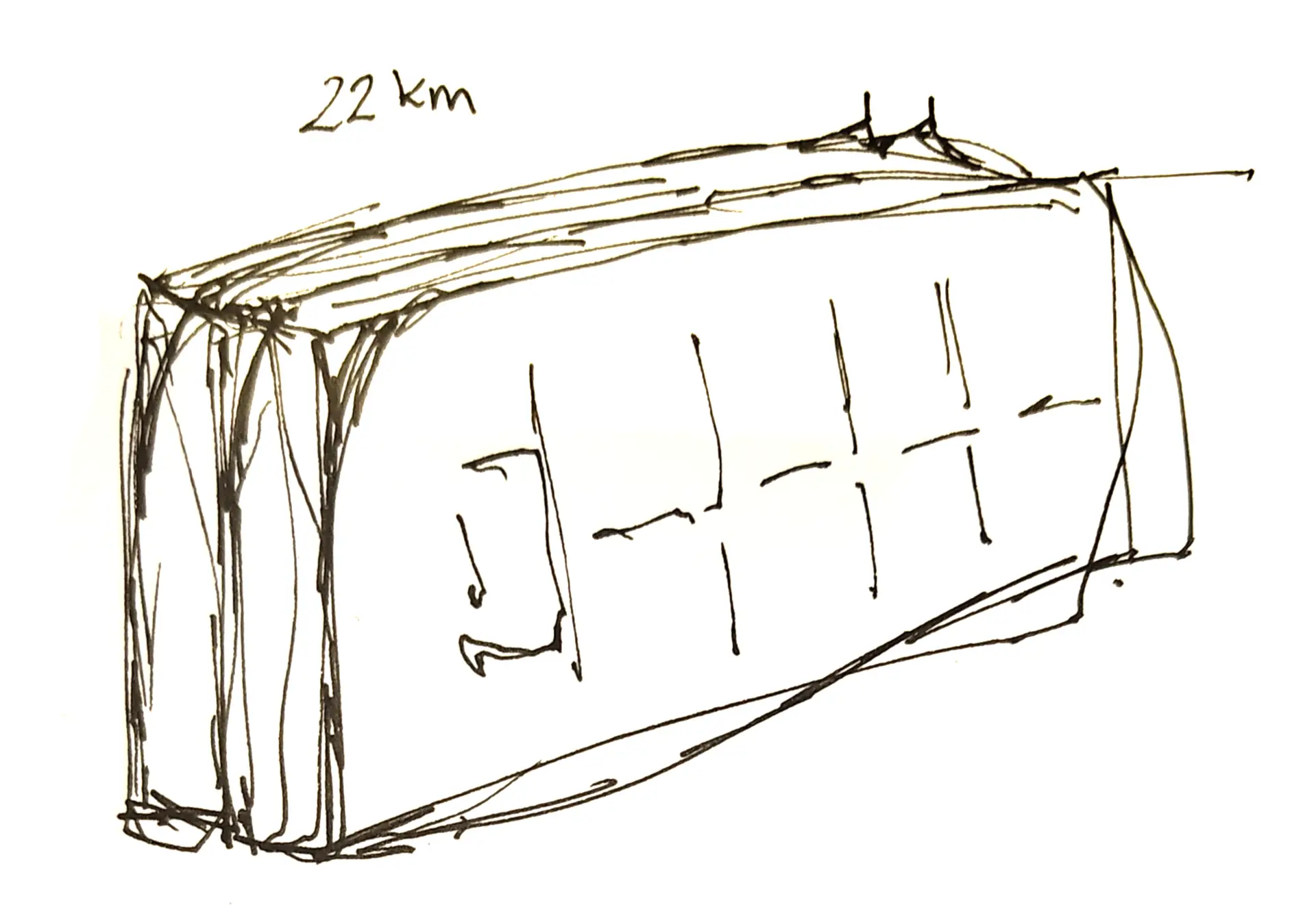
Many of the challenges can be summed up with the following image, which depicts a typical science fiction scene. Many of these science fictions scenes use something we call ‘greebles’. And therein lies the problem. We use greebles and can scale, rotate and position them as we see fit and this is a challenge when you need a proportionate sense of scale to make the image work.
What are greebles?
Greebles are collections of parts harvested for the use of building something bigger. The best definition comes from Wikipedia.
That definition uses the plastic kit-bashing version that was established in the 70’s but essentially the 3D spaceship modelling community use greebles extensively; it’s just that we employ digital greebles.
In the following image there is a collection of industrial looking objects which all have a dull German machine tool green hue. Occasionally they will have some metal, paint or other industrial looking materials.
Also in this rendered scene are two soldiers (top left) and nearby a large grey muscular humanoid form. These are just props to provide that sense or scale so I can master the proportions of all the greebles that make for a believable image.

The process of modelling a large spaceship
Blocking out
When 3D modelling spaceships the best way is to ‘block them out’. This process involves creating a basic geometrical form which has no detail and only serves to get the forms and their relationships with one another right.
I have recently started using a program called Plasticity So after the sketching phase I opened Plasticity and set about to create a semblance of the tall blocky shape or my 22km long freighter. I didn’t actually set a scale. The 3D model within Plasticity is only 7.25 metres long. I scale the model up to a suitable size in another piece of 3D software I use; Blender.
Blender
Blender is an impressive piece of software it is free, open-source and immensely powerful.
I import the .obj file that gets exported out of Plasticity and import that into a scene. To test the basic blocked out spaceship turned out to be an incredible challenge for me. Particularly when it came to applying materials to plain surfaces. It took many hours, and as evidenced by the following images wasn’t very successful.
Blender can use materials that are procedural or baked. Baked materials require a lot of work and I haven’t the skill set to use them. Procedural materials use a complex system of material nodes to simulate incredibly realistic looking materials, in this case the sort of scuffed and worn industrial look that works great with spaceship designs.
Spacestation procedural material
For the main hulI of the spaceship I intended to use a material I have called ‘Spacestation’. I spent many hours trying to get this material to work and it presented enormous challenges.
The main problem was when I got it to look great on one 3D component the settings would always carry over to the next. I tried creating new versions but there was an uphill battle.
In the following images the spacestation procedural material is a near black hue and in some items can be seen with a very obvious repeating pattern. A good example of it can be seen in the second image; the one with the blue item in the left. Next to the large grey humanoid robot on the left is the spacestation material. It has a very obvious pattern. That same material, but at a different scale can be seen to the right of robots head.
The final renders
The final renders were an opportunity to apply some atmospheric effects as well as judge the scale of my basic blocked out spaceship design. So within blender I started to ‘pose’ it as it were perhaps making a landing on a large flat surface.
Upon bringing it into Blender I realised just how difficult it is to work on such vast distances. So the scale was adjusted to around one kilometer in length. I also added some quick props and hit F12 (the render ‘button’ in Blender.)
